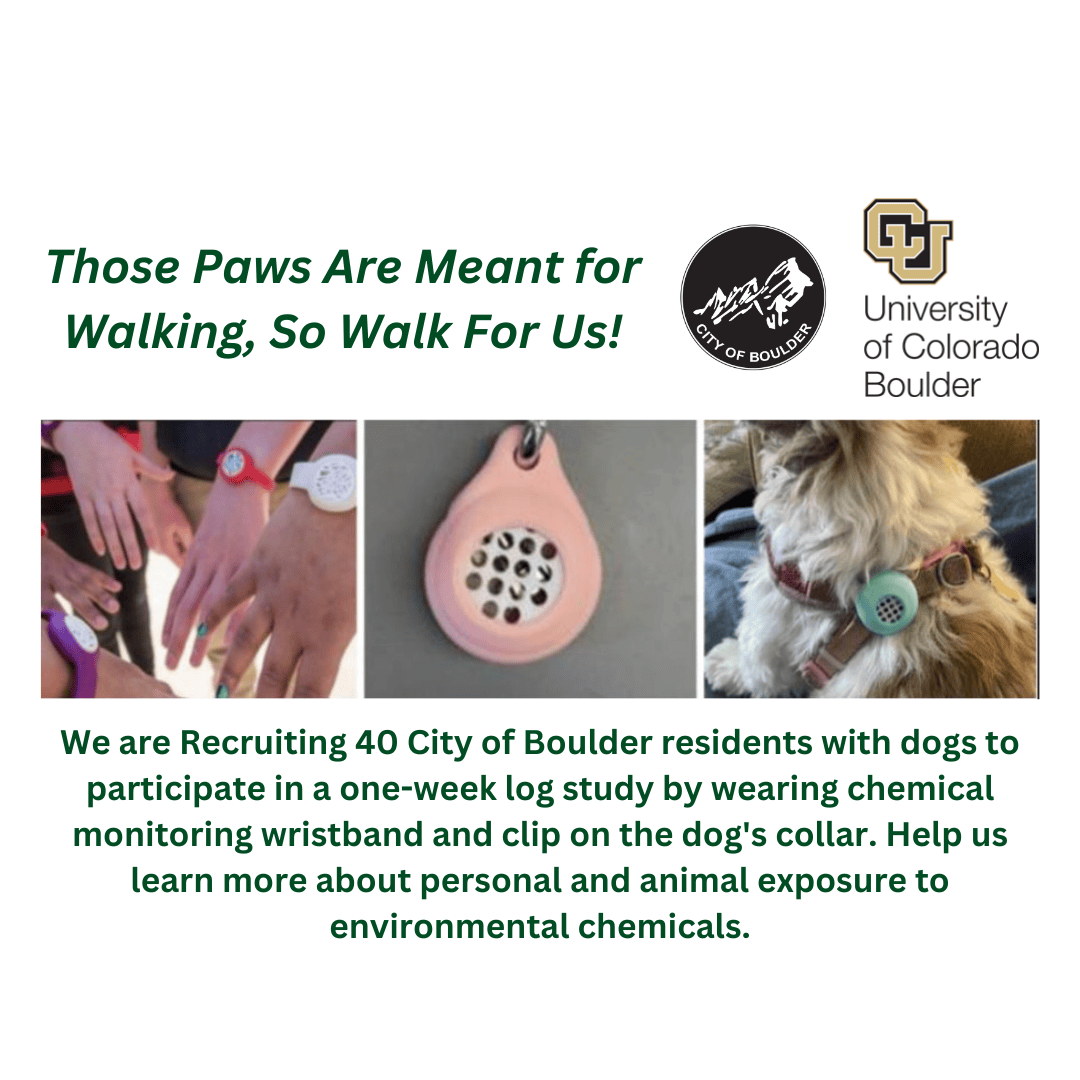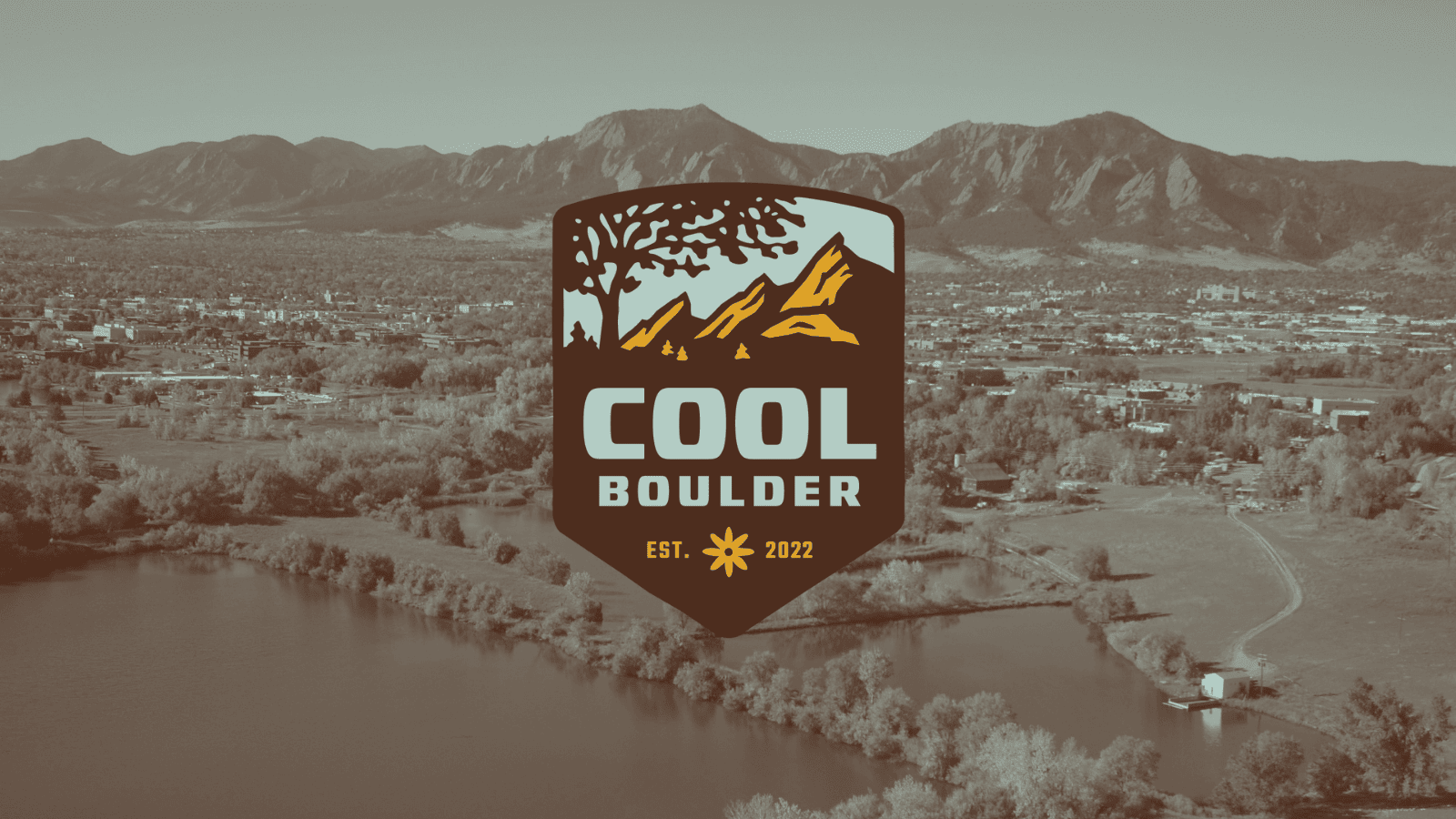Community Science
What is community science?
Community science is science that anyone can participate in, no matter your age or previous training or education! It usually involves simply recording observations, and it can occur anywhere – your backyard, while walking the dog, out in the mountains, or in your kitchen.
Why should you participate in community science?
Community science is fun - fueling curiosity, learning, and exploration. Information collected by community scientists helps contribute to our mutual understanding of the world, and can help governments, organizations, and communities make more informed decisions.
What’s an example of community science in Boulder?
In 2022, Boulder was one of 14 cities to participate in an international event in coordination with NOAA and CAPA Strategies in which community scientist volunteers drove designated routes to collect temperature and humidity data to help us better understand how heat is distributed across the City of Boulder. Now that we know more about where the hottest and the most vulnerable parts of Boulder are, we can use targeted solutions such as tree planting to implement cooling benefits.
We need you!
We need more community scientists to help us implement these solutions, as you are the expert of your community and have insights into what solutions might work best for you and your neighbors.
Get involved now, and help us take action to make our community more resilient, livable and equitable! More community science opportunities through Cool Boulder will be available in the future.
A great way to get started with community science on your own is to download the iNaturalist app and start recording your observations of plants, insects, and other animals! There are over 3.2 million iNaturalist users, making it one of the biggest biodiversity monitoring projects - and all of the data is available to scientists to use in their research. Learn more by visiting inaturalist.org.
Check out the lists below for even more ongoing opportunities to participate in community science!
Opportunities for Insect/Plant Monitoring:
-
Bumble Bee Watch is a collaborative effort to track and conserve North America’s bumble bees. We need your help! Because these animals are widely distributed, the best way to keep track of them is with a group of volunteers across the country equipped with cameras. With any luck, you might help us to find remnant populations of rare species before they go extinct.
-
Colorado Butterfly Monitoring Network (CBMN) is a long-term community science project led by Butterfly Pavilion that harnesses the power of volunteers to conserve Colorado butterflies. CBMN volunteers observe and record butterflies in open spaces and parks multiple times per season, gathering essential data that land managers can use when making conservation decisions. It’s a fantastic chance to get outdoors and learn about butterflies, while having a positive impact on conservation in Colorado.
-
The Monarch Joint Venture can connect you with a variety of community science projects related to tracking monarch butterflies in North America.
-
Native Bee Watch is a community science biodiversity monitoring project that began in 2016 at Colorado State University. The project is now a statewide program within Colorado State University Extension. Volunteers learn about bee biology and identification, and become a steward for pollinators and the environment.
-
Join the National Phenology Network's plant monitoring program, Nature’s Notebook. Learn about plant species in your area and record your observations about observable phases in the annual life cycle of plants.
Opportunities for Bird Monitoring:
-
Every year, the Boulder Audubon Society organizes the Christmas Bird Count. Join and contribute to a wildlife census that will help scientists assess the health of bird populations. The Christmas Bird Count is the nation's longest-running community science bird project and fuels Audubon's work throughout the year.
-
Join eBird, an online checklist project created by the Cornell Laboratory of Ornithology and the National Audubon Society. Ebird allows people to report real-time bird sightings and observations. eBird is among the world’s largest biodiversity-related science projects, with more than 100 million bird sightings contributed annually by eBirders around the world
-
Join the Great Backyard Bird Count. Each February, for four days, the world comes together for the love of birds. Over these four days we invite people to spend time in their favorite places watching and counting as many birds as they can find and reporting them to us. These observations help scientists better understand global bird populations before one of their annual migrations.
Other Opportunities:
-
Want to learn how to identify what kind of soil you have, how you can amend your soil with compost, attend virtual trainings and receive information about carbon farming practices that you can try it out in your own backyard? Join us!
By participating you will be contributing valuable data to our study to see if we can use community science to measure the potential for carbon sequestration in urban backyards. There’s no cost to participate! You will also receive information on how to get your own soil lab analysis and how to interpret it. Sign up here.
-
CoCoRaHS (pronounced KO-ko-rozz) is a grassroots volunteer network of backyard weather observers of all ages and backgrounds working together to measure and map precipitation (rain, hail and snow) in their local communities. By using low-cost measurement tools, stressing training and education, and utilizing an interactive Web-site, our aim is to provide the highest quality data for natural resource, education and research applications. The only requirements to join are an enthusiasm for watching and reporting weather conditions and a desire to learn more about how weather can affect and impact our lives.
-
Join the EarthEcho Water Challenge by TESTING, SHARING, and PROTECTING your local waterways! The EarthEcho Water Challenge (formerly World Water Monitoring Challenge) is an international program that runs annually and equips anyone to protect the water resources we depend on every day. The EarthEcho Water Challenge builds public awareness and involvement in protecting water resources around the world by engaging citizens to conduct basic monitoring of their local waterbodies:
-
The Globe at Night program is an international citizen-science campaign to raise public awareness of the impact of light pollution by inviting citizen-scientists to measure their night sky brightness and submit their observations from a computer or smart phone. Light pollution threatens not only our “right to starlight”, but can affect energy consumption, wildlife and health. More than 200,000 measurements have been contributed from people in 180 countries over the last 14 years, making Globe at Night the most successful light pollution awareness campaign to date!
Community Science Articles & Resources



Community science is exciting because individuals don’t have to have formal scientific training to contribute to our mutual understanding of the natural world. People who are curious about the world around them can take the time to learn more, whether it’s about pollinators or soil or the stars above. Participating in these projects yields benefits for both the individual and for the world.